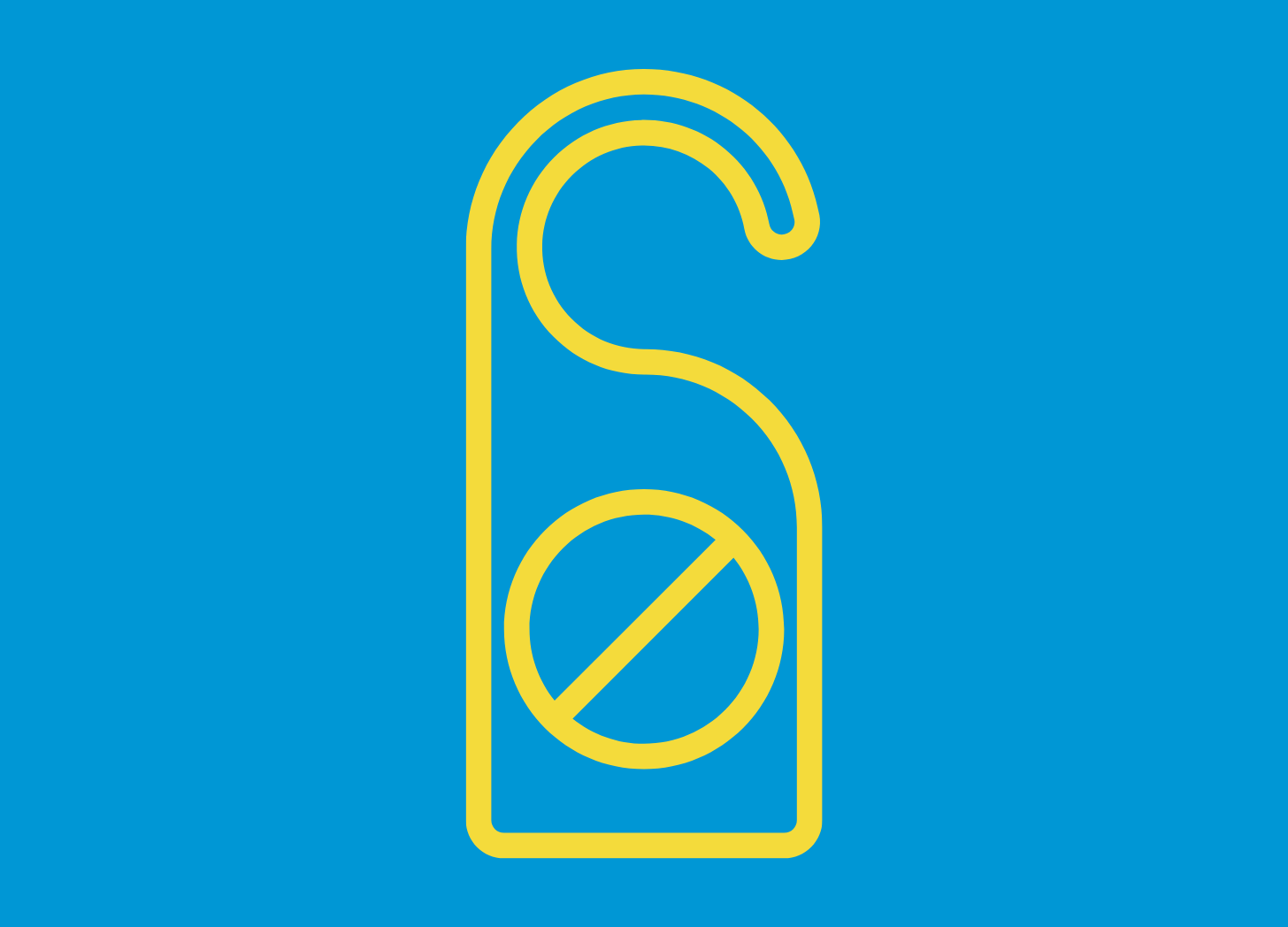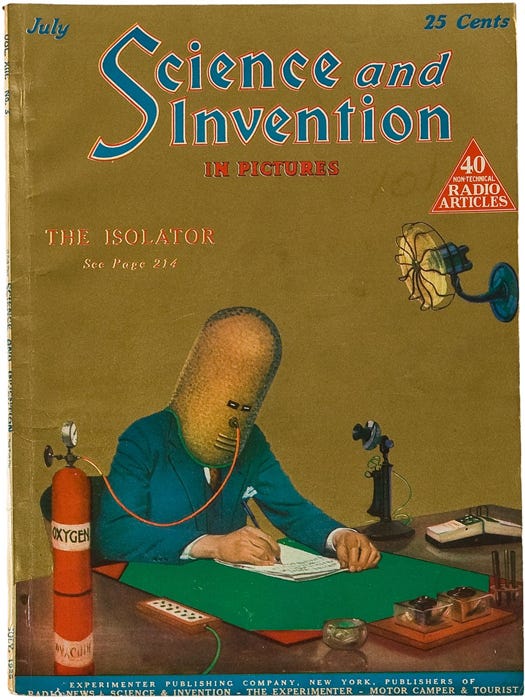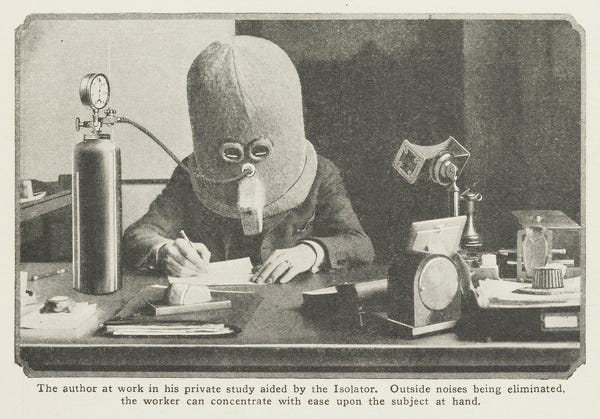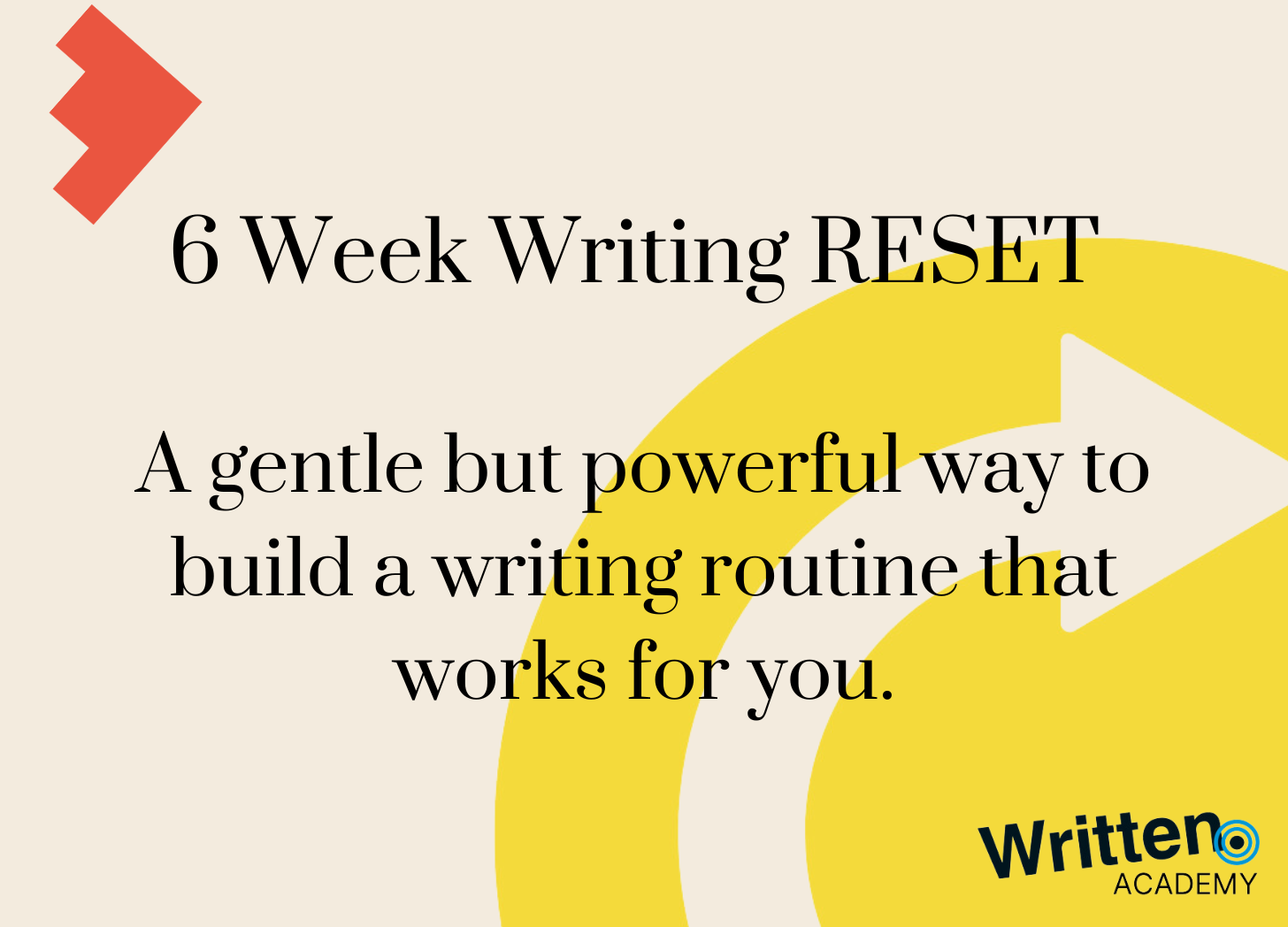How to stop getting distracted
Distraction hacks! Inspirational inventions to prevent procrastination. While there isn’t one tip that will magically stop distractions, there is something you can do.
As long as people have written they have procrastinated1 - and as long as they’ve procrastinated they’ve devised solutions to stop their distractions.
Take this ingenious invention from science fiction author Hugo Gernsbeck.2
In 1925 he launched ‘The Isolator’ a helmet that encourages focus by eliminating 95% of all noise and restricting vision to a tiny horizontal slit. An article in Science and Invention3 that year stated that: “Perhaps the most difficult thing that a human being is called upon to face is long, concentrated thinking.”
It went on to talk of the writer, “who has to perform, almost daily, in connection with his editorial duties, many tasks that involve considerable concentration, has found out that it is almost impossible to keep his mind on a subject for five minutes without disturbance.”
It goes on to paint a picture of scene I imagine is still familiar to you a century later:
“Suppose you are sitting in your study or your work room, ready for the task. Even if the window is shut, street noises filter through, and distract your attention. Some one slams a door in the house, and at once your trend of thought is disturbed. A telephone bell or a door bell rings somewhere, which is sufficient, in nearly all cases, to stop the flow of thought.”
Interruptions are everywhere
Street noise, people around you, phones pinging and doorbells ringing still top of the list of external interruptions in 2023. Last week we shared data on the categories of distraction that writers told us pulls them away from their writing.
» Read our last newsletter: What stops you writing?
This week we turn to solutions, but before we tell you an approach to manage distraction let’s consider Gernsbeck’s invention - he was after all the unnamed writer in the article.
His original soundproof contraption was constructed from wood and lined with cork which had the unfortunate side effect of causing the wearer to faint after about 15 minutes due to lack of fresh air. Subsequent updates included a piped oxygen supply and an idea to limit optical distraction as the eyes have a tendency to '“wander around, thereby distracting attention.” The solution to that problem was blackened glass with two lines scratched onto it so it became impossible to “see anything except a sheet of paper in front of the wearer.” Perfect for fostering focus!
“For that reason, he constructed the helmet shown in the accompanying illustrations, the purpose of which is to do away with all possible interferences that prey on the mind.”
Pictured: the original advert for The Isolator with the caption: The author at work in his private study aided by he Isolator. Outside noises being eliminated, the worker can concentrate with ease upon the subject at hand.
A century of distraction - and solutions
While Gernsbeck was constrained by materials of his age, current innovations to stop distraction haven’t evolved much.
Back in the day when private offices were common, a simple ‘do not disturb’ sign on a closed door would suffice; in the era of open-plan modern workers use other signals - literally so, you can mount a set of traffic lights on your desk to alert colleagues that you’re working and can only be interrupted in emergencies.
In his 2019 book Indistractable, digital behaviour change guru Nir Eyal provided a giveaway sign. Readers could cut, glue and stick this red light notice on their monitor to tell people, oh so very politely, to back off (though they’d have to get quite close to read the instruction).4
Other signals include wearing noise cancelling headphones or donning a hat; one writer I spoke to said she wore a ‘writing cardigan’ which was designed to alert her children that she was working. And in the spirit of Gernsbeck’s invention there’s a helmet called the Helmforn which claims to fully block all office noise.’
How to find your own solutions
The responses to our distraction survey found many other unique solutions. There were some amazing tips, tricks and solutions included but what struck me most was the sheer variety of ingenious approaches. Some of them will be practical and you’ll be able to implement immediately, others will have you recoiling in horror or howling with laughter.
And that’s the point: productivity is personal. What keeps you writing is individual to you and your circumstances.
By all means take inspiration from others, but first identify your specific distractions then brainstorm solutions for those. Come up with as many ideas as you can, riff off other people ideas, say ‘yes, and…’, go wild to generate solutions, and have fun. You never know you may end up submitting a patent for The Isolator 2025.5
Keep writing, Bec and Chris
“The greatest enemy of writing isn’t your own lack of talent or lack of industry it’s being interrupted by other people.”
- Joyce Carol Oates
Last call to join our RESET course
Do you start writing projects but never finish them?
If you want to build a sustainable writing routine that that supports your long term writing goals, sign up to RESET, our 6-week coaching course.
If you want a place for this September, you have until Friday 25th of August to reserve your spot. Check out RESET.
Tips from the Writer’s Sandbox
On Monday we shared our first tip from the Writer's Sandbox. As the theme of this month is stopping it was all about managing distraction. Have a read and let us know if you’d like it to become a regular feature.
Next Monday we’ll build on today’s approach to generating solutions with a step-by-step approach to brainstorming.
The first example of procrastination I can find is in the Greek concept of Akrasia - a lack of self-control or acting against one's better judgment. While fourth century BC philosopher Plato argued that "No one goes willingly toward the bad" Aristotle later suggests that humans are subject to a weakness of will which means they do in fact act against their better judgement. This debate about willpower has been rattling on for over two thousand years.
Huge gratitude to Cheryl who sent me a photo of The Isolator via Instagram. This quick message led me down a thoroughly enjoyable diversion into the history of this invention. Thank you Cheryl ❤️
The Isolator, Science and Invention, vol. 13, no. 3, July 1925
Bec was a beta reader for Nir Eyal’s Indistractible. While this book has some great examples and solutions for dealing with distractions, it puts the onus on the individual to solve when there are broader systemic issues at play which can only be solved by institutions, government policy and collective action. More on this when we talk about resilience!
To read more about Hugo Gernsbeck’s inventions (and writing) check out his Wikipedia entry.









